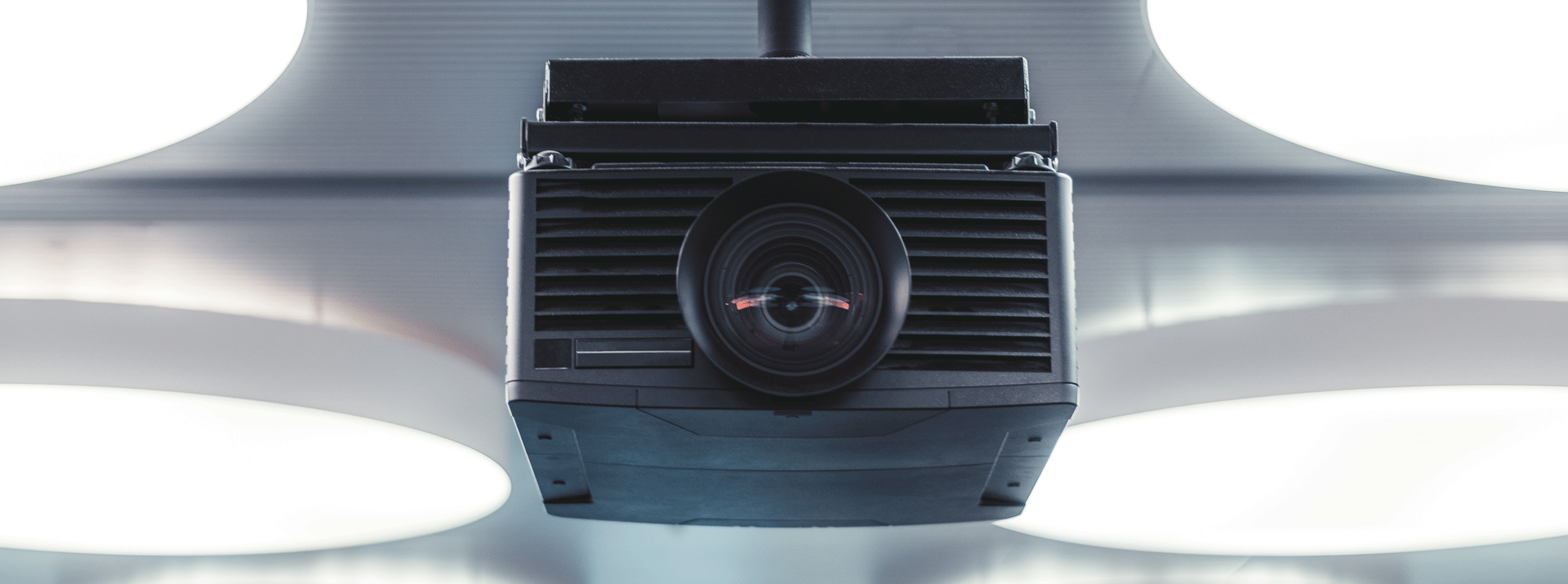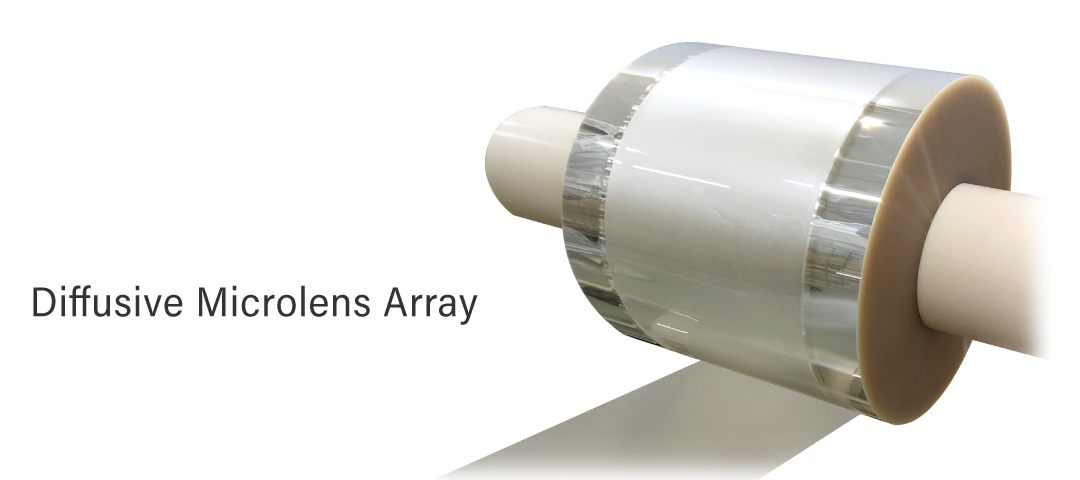
- Optical Products
The Basics of Anti-reflection Optical Thin Film
Contents
Two ways of reducing the reflection of ambient light
When light from a fluorescent or ambient source reflects off a tablet screen, it can make it challenging to see the display. Dexerials’ Anti-reflection (AR) film enhances screen visibility by minimizing this reflected light, also known as glare.

There are two primary strategies for reducing reflection or glare. The first involves scattering (or diffusing) light, while the second cancels it out through light interference, leveraging the properties of light waves. The image above provides a simple illustration of how these two methods impact a display. On the left, you see an example of the scattering method. On the right is the method of suppressing reflection through phase control, and the middle image shows a display without any anti-glare (AG) or anti-reflection (AR) film. With the scattering method (left image), the reflection of the fluorescent light is blurred, and the entire screen appears slightly whitened. With the reflection suppression method (right image), some glare remains, but the image quality is clear.
Anti-reflection films that diffuse reflections are referred to as anti-glare (AG) films, while those that reduce ambient light reflection are known as anti-reflection films (AR). The specifics of these two technologies are explained below.
AG film diffuses light using bumps
The AG film features a resin layer filled with silica particles on top of a base film. This structure creates a bumpy surface that scatters light. When light hits this uneven surface, it reflects in various directions. The primary function of AG film is to scatter this reflected light, reducing the amount that reaches the viewer’s eyes.
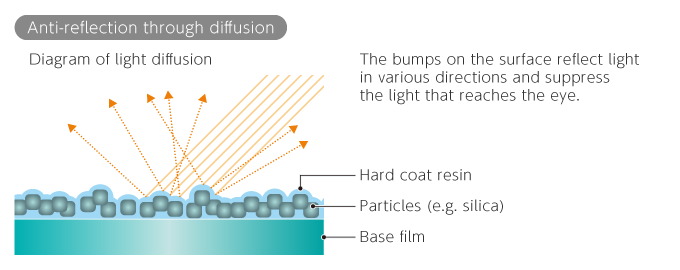
However, AG film has a downside: it can cause screens to appear whiter and images to seem blurred. The size of the bumps on the film can affect visibility. For instance, AG film with larger bumps diffuses more light, leading to a whiter overall image as the left side image. Conversely, AG film with smaller bumps appears less white, but the outline of the reflected fluorescent light image is more distinct as following images on the right.
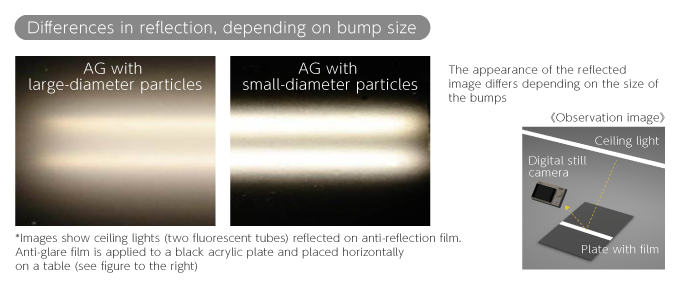
AR film utilizes the properties of light waves
AR film is composed of a base film covered with layers of film with varying refractive indices. This film operates on the principle of destructive interference between light waves reflected at the interface and the surface. By adjusting the AR film’s thickness and material, it’s possible to control the light phase, reducing the reflected light that reaches the viewer’s eyes.
While AR film does suppress reflected light, changes in the viewing angle can shift the optical path length through the film. This shift can alter the amount of reflection reduction across some of the wavelength range, affecting the color of the reflection.

Dexerials has developed a film that combines the features of both AG and AR films. This is demonstrated in four photos of a ceiling fluorescent light reflected on a glass placed atop a black acrylic plate. The photos show plates with no film, AG film, AR film, and a combination of AG and AR film. The reflection of the fluorescent light varies significantly across all four. With AG film, the light appears blurred and white, while with AR film, the shape of the fluorescent light is dark but clearly visible. The combination of AG and AR film results in almost no reflection of the fluorescent light and a clear view of the black acrylic beneath.

Multiple options for a variety of requirements and applications
Anti-reflection film is currently used in various applications, including notebook PCs, tablet PCs, industrial displays, and in-vehicle displays like car navigation systems. Each application has different requirements based on user preferences and usage conditions. Four photos demonstrate the ceiling light reflection on glass with different combinations of AG and AR with varying haze levels. The three on the left show reflection on glass with “AGAR” anti-reflection film, each with different haze values (the degree of light diffusion). The higher the haze level, the greater the light diffusion and the whiter the overall appearance. The rightmost photo shows a “piano black” anti-reflection film without AG film, also developed by Dexerials.
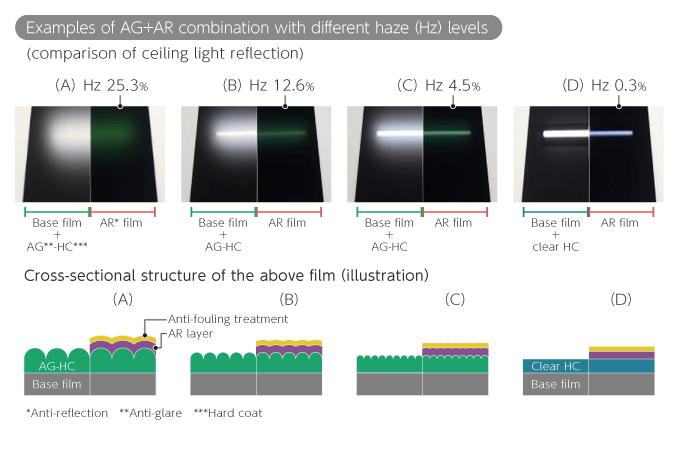
Moreover, as previously mentioned, the effectiveness of anti-reflection film using light interference is dependent on the viewing angle. Dexerials’ anti-reflection film is designed to minimize this dependence, resulting in products with low reflectance over a broader wavelength range. This feature is particularly important for in-vehicle displays, which are often viewed at an angle from the driver’s seat.
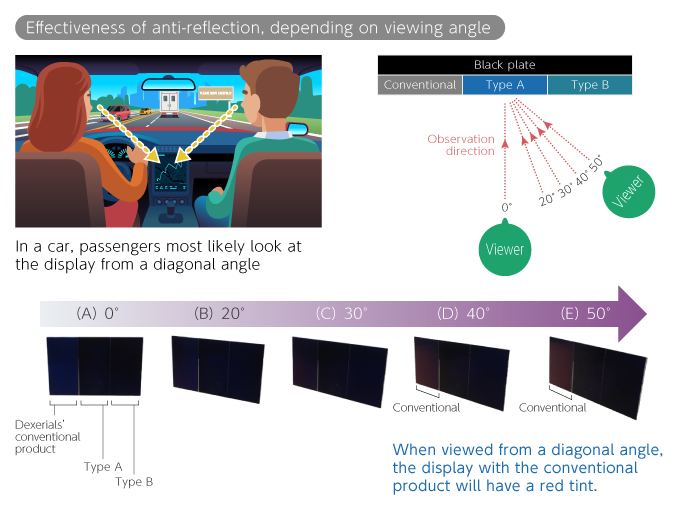
In recent years, there’s been a growing demand for in-vehicle displays, such as car navigation systems, instrument clusters, and center information displays (CID) in luxury cars, to feature glossy black displays akin to a piano’s finish. This is to complement their opulent interiors. Dexerials’ piano black and low-haze anti-reflection films are increasingly being utilized, not just for in-vehicle displays, but also for tablets’ “beautiful black” displays.
Customers who use anti-reflection films have a range of requirements. These include blurring the reflected image, maintaining clarity while preventing reflections, and preserving color accuracy and gloss. In response to these diverse needs, Dexerials has developed a wide array of anti-reflection films (refer to the specification table below). Dexerials is committed to ongoing product development to meet customer expectations.
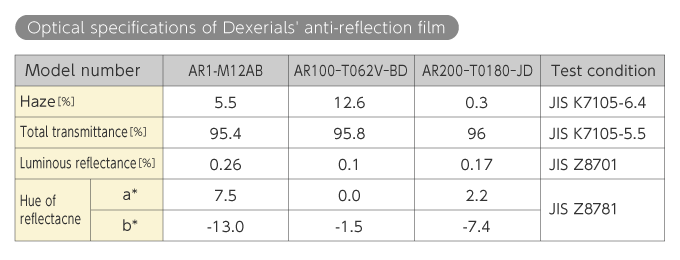
- SHARE
 Back to top
Back to top  Contact us
Contact us 



